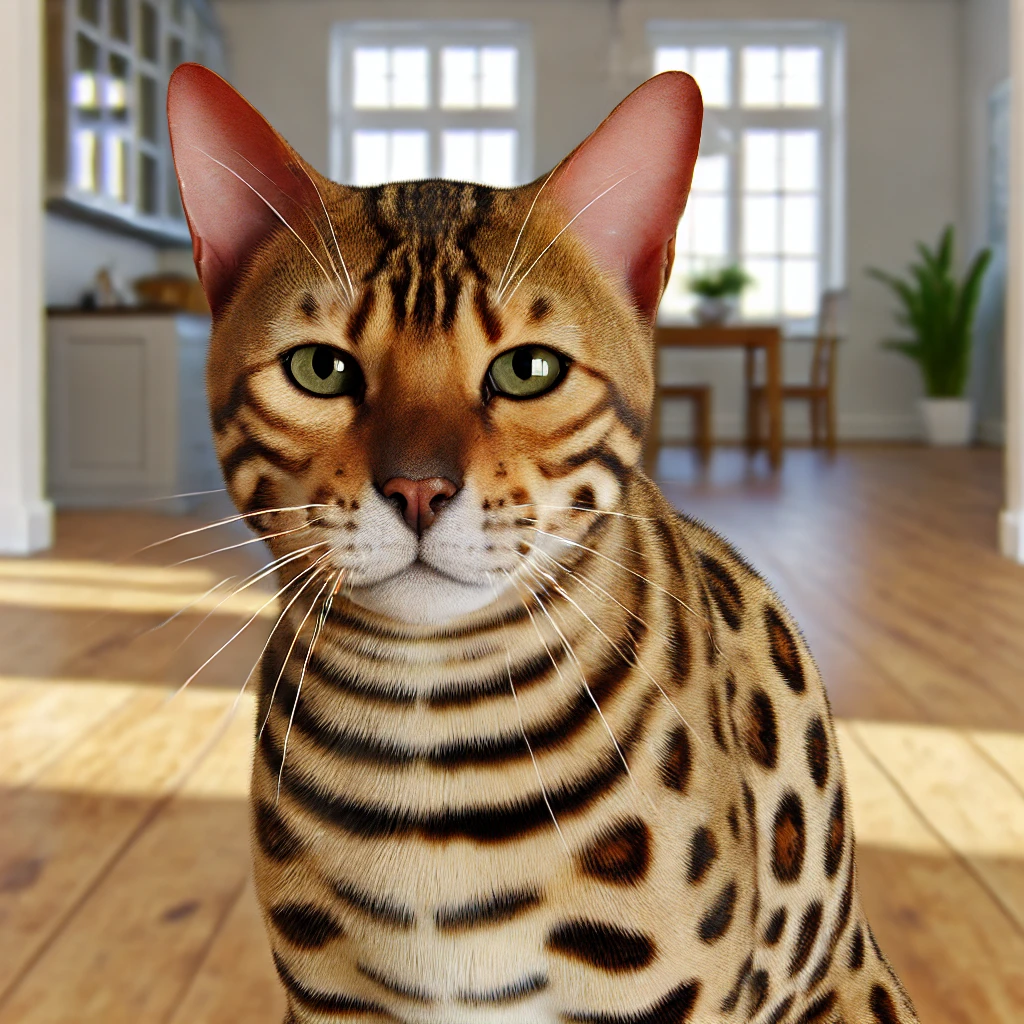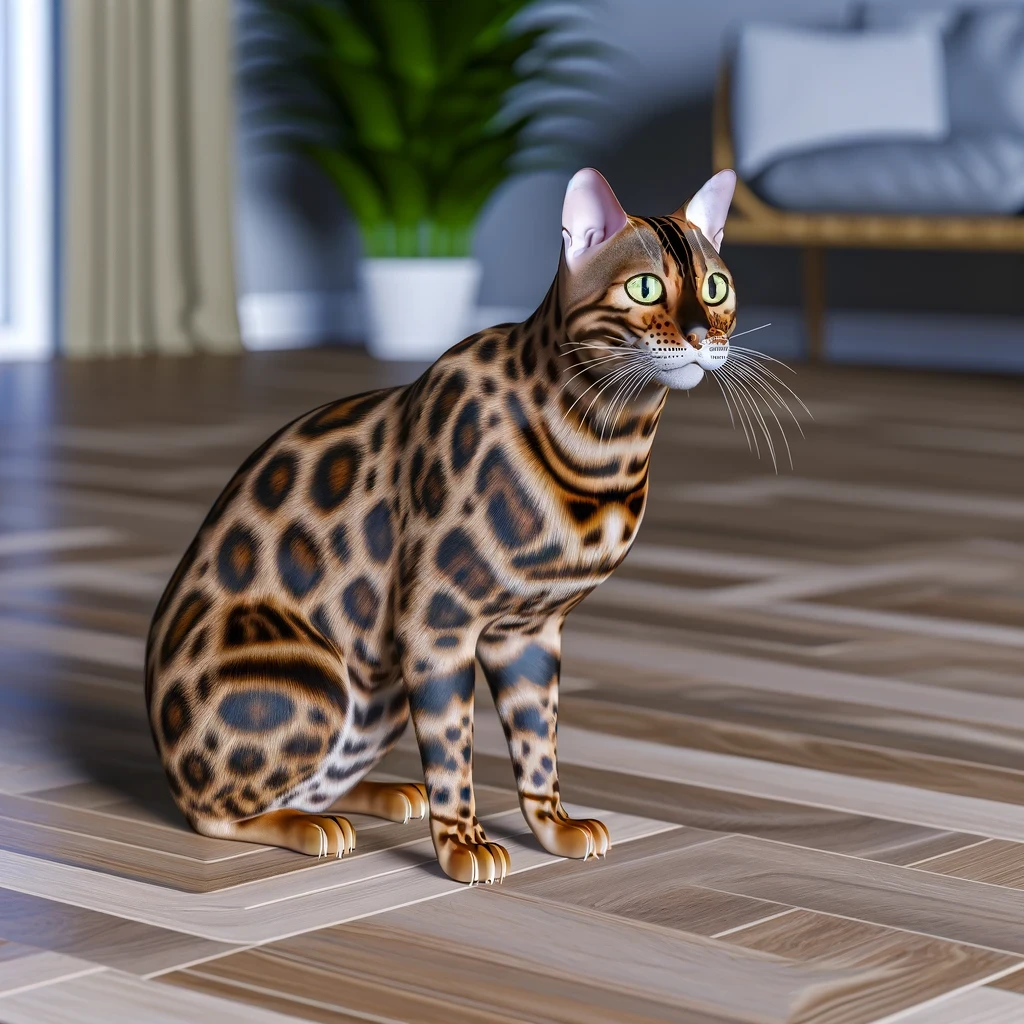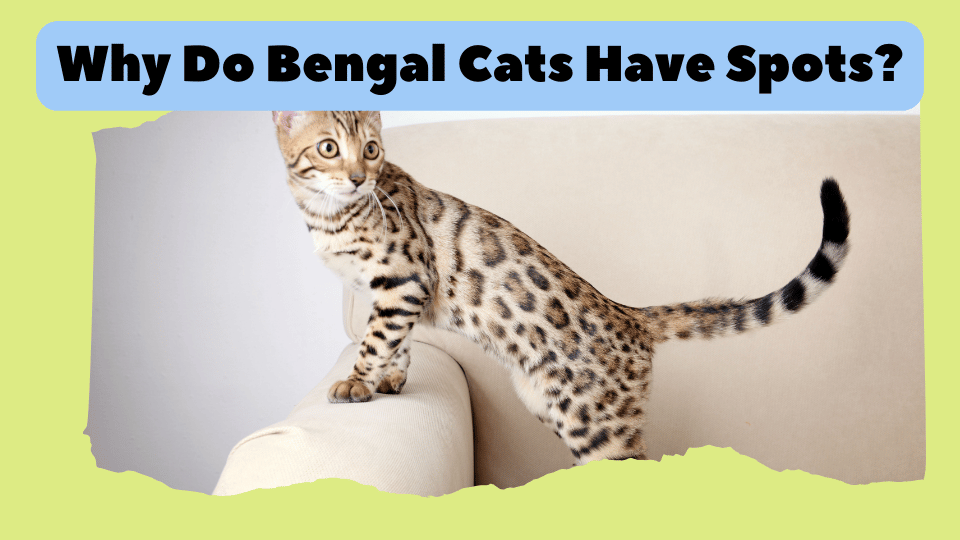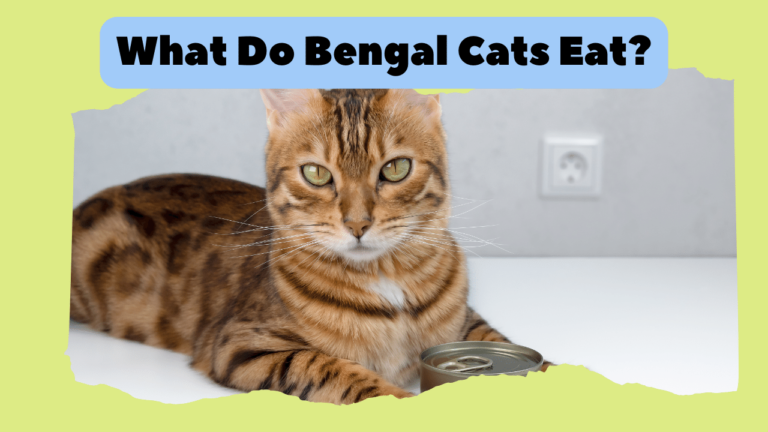Why Do Bengal Cats Have Spots?
Bengal cats are one of the most striking and exotic-looking domestic cat breeds, known for their wild appearance and distinctive spotted coat. If you’ve ever seen a Bengal cat, you’ve probably marveled at its unique spots and wondered, “Why do Bengal cats have spots?” The answer lies in a fascinating blend of genetics, evolution, and selective breeding that all contribute to this breed’s stunning coat pattern.
The Origin of Bengal Cats
A Hybrid Breed
The story of the Bengal cat begins with the deliberate crossbreeding of domestic cats with the wild Asian leopard cat. This hybridization was originally intended to combine the wild cat’s striking appearance with the gentle, affectionate nature of a domestic cat. The result is a breed that looks like it just stepped out of the jungle but behaves like the ideal household pet.
Breeding Goals
Breeders aimed to replicate the wild, exotic look of the Asian leopard cat, focusing on preserving the beautiful spotted coat. Over time, selective breeding practices ensured that the Bengal cat would consistently display these striking spots while maintaining a domestic temperament.
The Genetics Behind the Spots

Genetic Makeup
The unique spots of the Bengal cat are a direct inheritance from their wild ancestors. These spots are not just random but are rooted in the genetic code passed down from the Asian leopard cat. This wild influence is what gives the Bengal its distinct appearance, setting it apart from other domestic breeds.
Tabby Genes
Interestingly, the spots seen on Bengal cats are a variation of the tabby gene, which is responsible for different coat patterns in many cat breeds. In Bengals, these tabby genes interact in a way that produces the signature spots rather than stripes or marbling seen in other tabby cats.
Spotted Patterns vs. Other Patterns
While many domestic cats have some form of pattern, the spots on a Bengal cat are larger, more defined, and often have a rosette shape, similar to those found on leopards. This is in contrast to the classic tabby pattern, which typically features stripes or swirls.
The Science of Coat Patterns
Melanin and Pigmentation
At the core of any coat pattern is melanin, the pigment responsible for color. The distribution of melanin in the fur creates different patterns, including the spots seen on Bengal cats. Variations in pigmentation result in the contrasting colors that define each spot.
The Role of Agouti Signaling Protein (ASIP)
The Agouti Signaling Protein (ASIP) plays a critical role in pattern formation by determining where and when melanin is produced. In Bengal cats, the expression of ASIP is modulated in such a way that it creates the distinctive spots and rosettes on their coat.
Genetic Variations
Genetic variations among Bengals can lead to slight differences in the size, shape, and distribution of spots. However, careful breeding practices help ensure that the most desirable patterns are passed on to future generations.
The Evolutionary Advantage of Spots

Camouflage in the Wild
In the wild, spots serve a crucial purpose: camouflage. For the Asian leopard cat, these spots help break up the outline of the cat’s body, making it harder for predators or prey to spot them. This natural advantage is mirrored in the Bengal cat’s spots, though it’s more for aesthetic appeal in domestic settings.
Mimicking Wild Relatives
The spots on a Bengal cat don’t just look cool—they’re a direct nod to their wild relatives. Breeders and enthusiasts alike appreciate this wild connection, as it gives the Bengal cat a unique identity among domestic breeds.
Selective Breeding Practices
Focus on Aesthetics
Bengal breeders have meticulously selected cats that exhibit the most striking and well-defined spots, enhancing this feature over generations. This focus on aesthetics ensures that the Bengal cat remains one of the most visually stunning breeds available today.
Preserving Wild Traits
While domesticating the Bengal cat, breeders have been careful to preserve the wild traits that give the breed its distinctive look. This includes not only the spots but also other physical characteristics like their sleek, muscular build and large eyes.
Consistency in Breeding
To maintain the Bengal’s iconic appearance, breeders use selective breeding techniques that favor the inheritance of specific genes responsible for the spotted pattern. This consistency helps ensure that each generation of Bengal cats carries on the breed’s hallmark traits.
Comparison with Other Spotted Cats
Bengals vs. Leopards
When you look at a Bengal cat and a leopard side by side, the similarities are striking. Both feature large, rosette-like spots on their coats. However, while leopards use these spots for survival in the wild, Bengals wear them as a badge of their exotic heritage.
Other Spotted Domestic Cats
Bengals aren’t the only domestic cats with spots. Breeds like the Ocicat and Egyptian Mau also feature spotted coats, though their patterns and origins differ. Bengals, however, are unique in their direct link to a wild ancestor, which is reflected in their distinct markings.
The Popularity of Spotted Bengals
Aesthetic Appeal
The Bengal cat’s spots are undoubtedly one of the breed’s main attractions. Their wild, exotic look appeals to cat lovers who want something out of the ordinary, making Bengals one of the most sought-after breeds in the pet market.
Demand in the Pet Market
The demand for Bengal cats, especially those with prominent spots, has led to a thriving market. Their unique appearance, combined with their lively personality, makes them a favorite among cat enthusiasts.
Common Misconceptions about Bengal Spots
There are a few misconceptions about Bengal cats and their spots. Some people believe that all Bengal cats have spots, but in reality, some may have marbled patterns instead. Others think that the spots indicate a purely wild nature, but Bengals are as domestic as any other cat breed.
Are All Bengals Spotted?
Not every Bengal cat has spots; some have marbled patterns, which are also beautiful and unique. However, spots are the most iconic and recognized pattern, contributing to the breed’s wild aesthetic.
The Future of Bengal Breeding
Trends in Breeding
As Bengal cats continue to grow in popularity, breeders are exploring new trends in coat patterns and colors, while still maintaining the breed’s signature look. The future may hold even more variety in how these spots appear.
Preserving Genetic Diversity
It’s important for breeders to maintain a healthy gene pool to avoid inbreeding and genetic issues. This ensures that Bengal cats remain healthy, vibrant, and true to their wild-looking origins.
Conclusion
The spots on a Bengal cat are more than just a pretty pattern—they’re a testament to the breed’s unique origins, careful breeding, and the natural beauty of the wild brought into our homes. Understanding why Bengal cats have spots helps us appreciate these incredible animals even more, not just for their looks but for the fascinating history and genetics behind them.
FAQs
- Do all Bengal cats have spots?
No, while many Bengal cats have spots, some have marbled patterns instead. - Are Bengal cats related to leopards?
Bengals are domestic cats with wild ancestry, specifically the Asian leopard cat, but they are not directly related to leopards. - Do Bengal cat spots change as they grow?
Yes, Bengal cat spots can darken and become more defined as they mature. - Are Bengal cats more active than other cats?
Yes, Bengals are known for their high energy and require more stimulation and playtime than some other breeds. Discover Which Breed is Best For You - How can I enhance the appearance of my Bengal’s spots?
A healthy diet, regular grooming, and proper care will keep your Bengal’s spots looking vibrant and well-defined.


